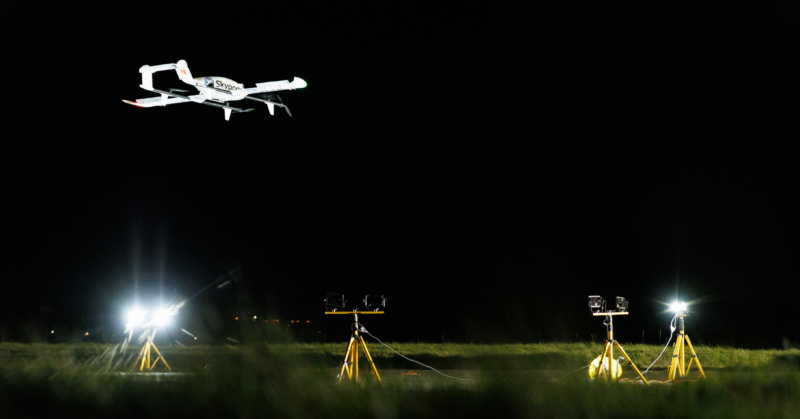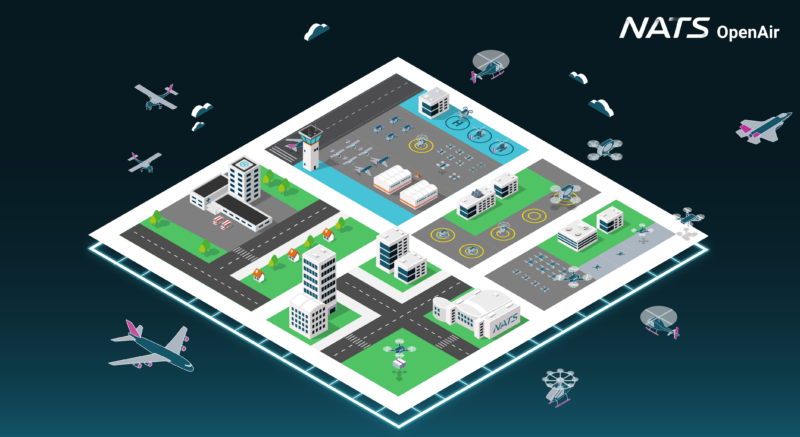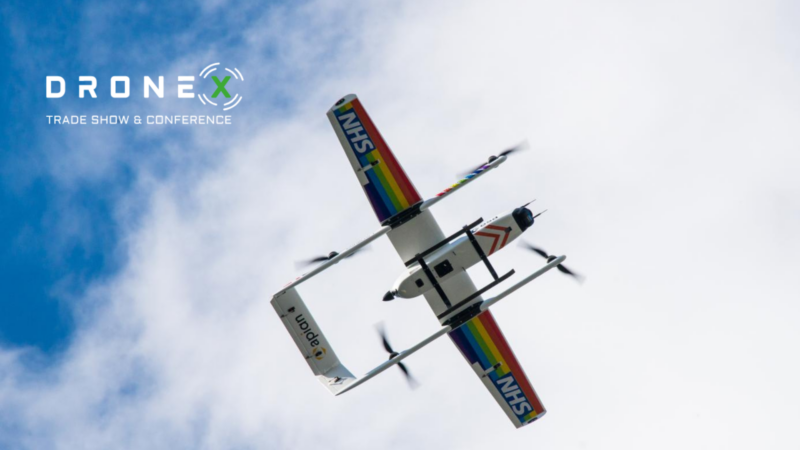NHS airport drone flight offers a glimpse of the future
3 November 2023This week, I was privileged to represent NATS at the Project Caelus flight trials, which demonstrated that drones are on their way to becoming an important part of the aviation industry, and indeed, everyday life.
Growing up near Glasgow airport, I remember the many days spent peering through the airport fence watching the planes fly in and out and feeling the thrill from the noise of each one that passed.
On an unusually clear night (considering that the forecast has been, typically, very sketchy) I was back at my old stomping ground but this time on the other side of the fence for something no less exciting. Instead of waiting for the roar of the powerful jet engines overhead, I eagerly awaited the ‘zip’ of a drone taking flight.
Awaiting the start of the trial, I found myself not only reflecting on Glasgow airport of the past; the rare arrival of Concorde, the ‘Jumbo Jets’ but also gazing into the future of our industry – drones, electric air taxis & high altitude platforms.
As part of the award winning Project Caelus and the wider Future Flight programme (a UK Innovation Strategy Project) NATS is supporting the efforts to integrate drones into today’s airspace for the delivery of critical medical supplies to some of the most remote areas of Scotland. Today, a 15-minute cancer treatment can take hours and involve a 70-mile journey by car and ferry – an onerous trip when in the best of health. Routine drone deliveries could change this; supplies and samples could be delivered rapidly, within a time-controlled window with medical grade, temperature controlled and monitored packaging, all critical to success of the treatment. This initiative is a game changer not only for patients, but also for the environment.
In line with the CAA’s airspace modernisation strategy, the integration of drones is expected to follow the roadmap of segregation, accommodation and finally ending up with fully integrated airspace. This flight, in a segregated piece of airspace within an airport, is an important steppingstone towards what NATS believes will be a long-term solution: integration of traditional air traffic management with future new airspace users.
Integrating uncrewed aircraft into airports and airspace, doesn’t happen overnight. Projects like this one take time to get off the ground (pun intended) as safety is critical. We have approached Caelus in three phases – until this week, all conceptually based. The first phase demonstrated how a drone network, flown ‘beyond visual line of sight’ could connect hospitals, pathology laboratories, distribution centres and GP surgeries across Scotland. The second phase integrated two different types of drone to improve the speed and extend the use for time-critical medical supplies of varying payloads.
We spoke to Skyports at DroneX in September about their pioneering aircraft and how it is improving patient experience.
We are now in phase 3 of the project, and this is where we move conceptual to the sky, and why I found myself, at 3am on a fine Glasgow morning watching a drone take to the skies. It marked a new, and I think most exciting, phase of the project.
Behind the scenes, our teams have been working to ensure we have the right processes and procedures in place for every drone flight to happen safely in a commercial airport operation within controlled airspace. We’ve been working tirelessly with the Caelus consortium members and our fantastic team at the Glasgow airport control tower to find a path through the regulatory framework to enable these potentially life changing flights to happen. Alongside this, our analytics and R&D teams are developing technology solutions and simulation models that provide the evidence to support this.
The benefits of opening our skies to new users are tangible and because of this, the urgency to scale this to routine operations is heightened. So, from my ten-year-old self, looking forward ten years from now, I can imagine looking back on this day, sharing the memory with my daughters who probably won’t blink an eye when a drone speeds across the sky above us.
Comments
Please respect our commenting policy and guidelines when posting on this website.








